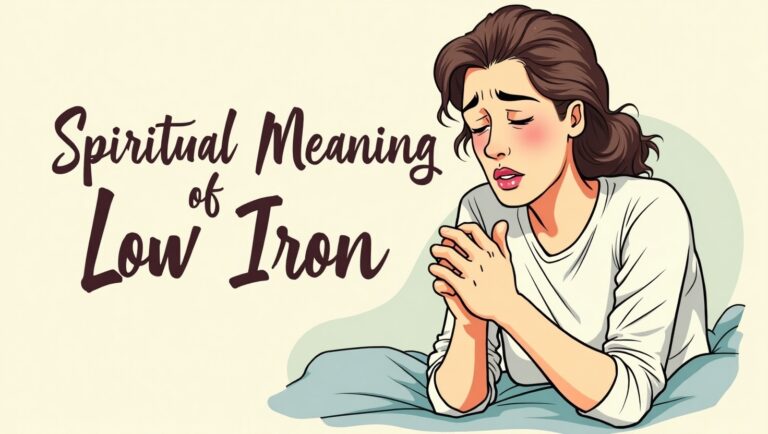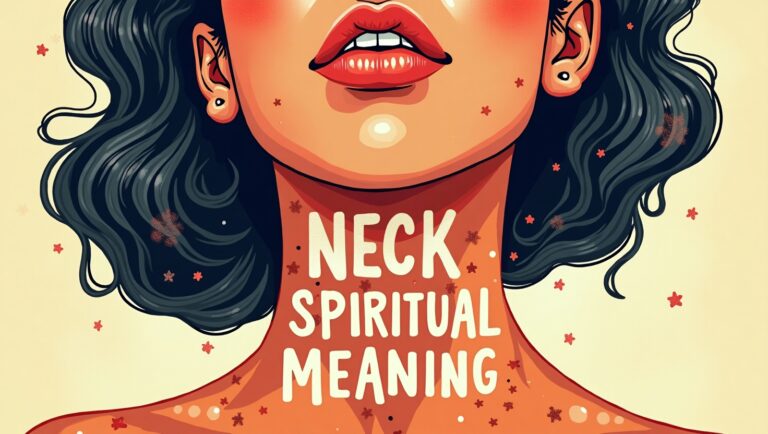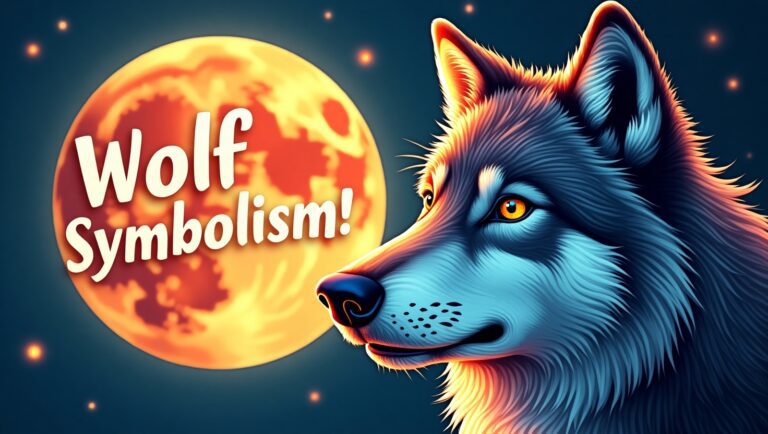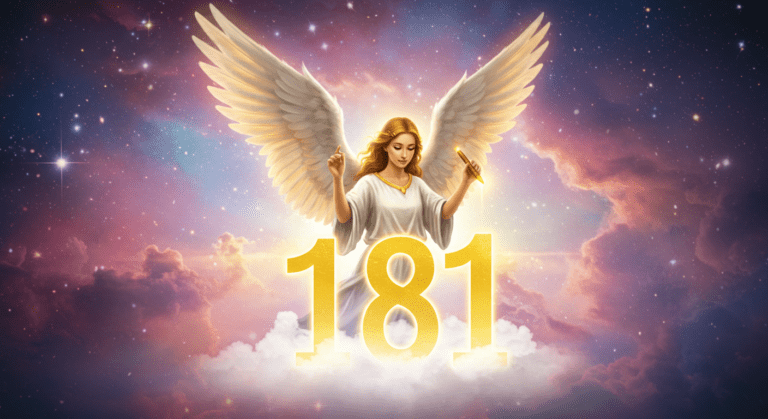Raven Symbolism & Spiritual Meaning!
When a raven came to perch beside me last summer during a difficult time, a glimmer of clarity was sparked. Its intense eyes seemed like a reminder to have faith in my instincts and accept change. Raven symbolism for me now signifies leadership through the unknowns of life.
Ravens intrigue with their dark loveliness and deep symbolism, exuding mystery and intelligence. Throughout history, they have been symbols of transformation, intuition, and messages from the gods. Discover how raven leads to personal transformation and spiritual awareness.
Stay tuned with us as we go deeper into the fascinating realm of raven! Discover how these mysterious birds lead us through change and insight. Join our quest to unveil the secret meanings of ravens in myths, nightmares, and beyond!
Key Takeaways:
- Ravens symbolize mystery, intelligence, transformation, and duality across global cultures.
- In mythology, ravens act as divine messengers, tricksters, or creators, shaping human stories.
- Literature portrays ravens as omens of death, prophecy, or psychological depth, notably in Poe’s The Raven.
- Spiritually, ravens guide individuals through change, intuition, and shadow self exploration.
- Modern media embraces ravens as symbols of rebellion, individuality, and hidden knowledge.
The Captivating Essence of Raven Symbolism:
What makes ravens such powerful symbols in our lives and stories? Ravens captivate with their dark beauty and profound symbolism, embodying mystery and wisdom. Across cultures, they represent transformation, intuition, and divine messages. Explore how raven’s meaning inspires personal growth and spiritual insight.

Unlike common birds, ravens dance between the tangible and the mystical. Their remarkable intelligence—evident in their ability to solve puzzles and mimic sounds—positions them as emblems of wisdom and cunning. Across centuries, ravens have appeared in ancient myths, sacred texts, and contemporary art, embodying both creation and shadow. This section delves into the roots of their allure and how their symbolism shifts across cultural landscapes.
Ravens embody a striking paradox. They represent life and death, hope and foreboding. For example, Native American tribes honor them as world-creators, while European tales often link them to mortality. Their adaptability, thriving in harsh tundras or bustling cities, mirrors their symbolic versatility. Additionally, their eerie vocalizations and bold demeanor spark curiosity about their deeper significance. As we explore further, we’ll uncover how ravens weave their mystique through human experience.
“The raven himself is hoarse that croaks the fatal entrance of Duncan under my battlements.” – William Shakespeare, Macbeth
Unraveling Raven in Mythology and Folklore – Ancient Tales:
Ravens have flown through the myths of many cultures, playing divine and worldly roles. From creation myth to prophecy legends, the raven plays an intense symbolic role in world folklore. This section explores how the raven influences mythology as a creator, messenger, and omen in various traditions.
Native American Symbolism:
In Native American traditions, ravens are sacred beings. Tribes throughout the Pacific Northwest particularly place Raven in the role of a creator god. In Haida myth, Raven thwarts a selfish chief to steal the sun, moon, and stars, giving light to humankind. Tlingit and Inuit stories also portray Raven as a transformer, shaping rivers, mountains, and animals through cunning adventures.
Aside from creation, ravens also represent balance. Additionally, ravens appear in rituals and totems, symbolizing guidance from a spiritual perspective. Their visibility in oral traditions is a testament to how they teach humans to seek knowledge through observation and endurance.
Norse Mythology and Odin’s Ravens:
Norse mythology elevates ravens to divine prominence. Odin, the god of wisdom and war, relies on two ravens, Huginn (thought) and Muninn (memory), to survey the Nine Realms. Each morning, they soar across Midgard and beyond, returning to whisper their discoveries to Odin. This role positions ravens as symbols of knowledge, foresight, and cosmic awareness. Their tie to Odin links them to battle, poetry, and prophecy, amplifying their cultural weight.
In addition, ravens symbolize the occult in Norse mythology. They travel worlds inaccessible to mortals, bearing the secrets of gods to men. Vikings honored ravens, inscribing their likeness onto shields and sails to receive Odin’s blessing. This sanctity positions ravens as spiritual messengers, bridging mortal and godly worlds with unparalleled wisdom.
Celtic Symbolism:
Celtic lore weaves ravens into war and fate. The goddess Morrigan, a battle and sovereignty deity, is frequently depicted as a raven. She sits atop battlefields, predicting victory or defeat. This establishes ravens as signs of fate, leading warriors through turmoil. Their sharp calls were viewed as omens, indicating changes in fortune or the will of the gods.
Apart from the above, ravens also represent protection in Celtic myth. They protect sacred groves and serve as an alarm to impending danger. Druids, the spiritualists of the Celts, cherished ravens for their gift of prophecy. Ravens, in the eyes of the Celts, cross the boundary between life and death, giving glimpses of eternity.
Asian Symbolism:
Ravens have specific meanings in Asian cultures. In Japanese mythology, a three-legged raven called the Yatagarasu is a messenger of the gods. It led Emperor Jimmu, Japan’s legendary first emperor, to victory, representing guidance and fidelity. In this representation, ravens are shown to be guardians and bearers of godly will. In Chinese mythology, ravens symbolize the sun, representing vitality and cosmic balance.
In addition, Asian cultures emphasize ravens’ intelligence. Their skill in navigating intricate landscapes reflects their position as spiritual guides. Contrary to Western associations with death, the Asian raven tends to lean toward life and awakening. The difference adds depth to their worldwide symbolic context, reflecting how versatile they are in different cultural settings.
“Consider the ravens: They do not sow or reap, they have no storeroom or barn; yet God feeds them.” – Luke 12:24, The Bible
You Must Know: Penguin Totem – Spiritual Meaning and Life Lessons!
Discovering the Spiritual Power of Ravens – Ravens as Spiritual Beacons:
Ravens stand tall as strong symbols in spiritual dimensions, leading souls towards change and self-discovery. Their black feathers and sharp senses bring the mysteries of the universe to mind, and they are therefore trusted companions in personal and shared quests. This section looks at how ravens aid in spiritual development, intuition, and connection with the divine.
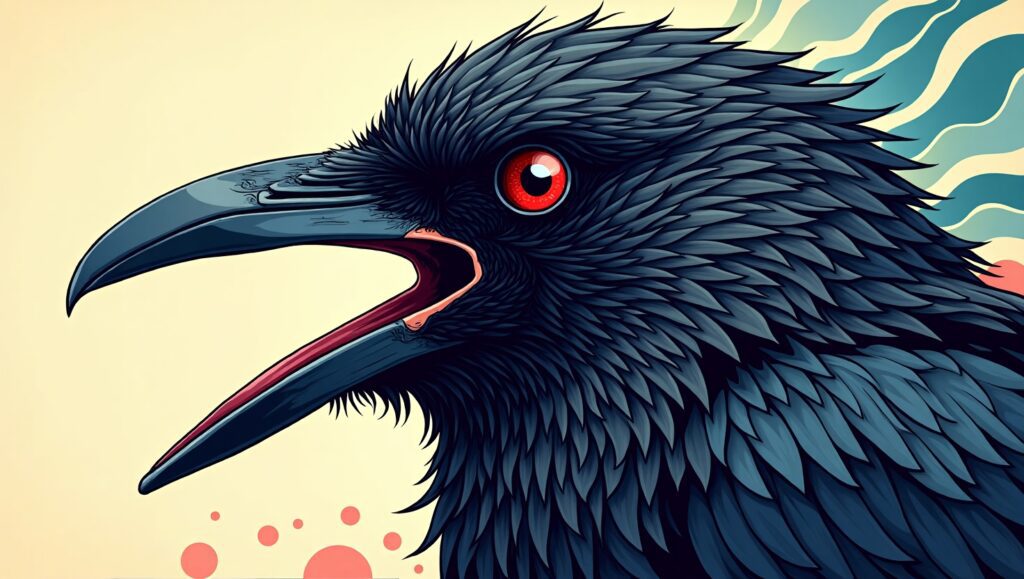
Ravens as Spiritual Guides:
Spiritually, ravens are powerful partners. Their black feathers represent the unknown, compelling people to confront fear and accept change. Some people feel ravens emerge at turning points—career changes, loss, or rebirth—heralding change. For instance, seeing a raven when faced with difficulties could cause someone to consider life’s next phase. This makes them symbols of rebirth and development.
Also, ravens relate to intuition. Their keen senses—great eyesight and sharp hearing—reflect the capacity to see underlying truths. In modalities such as meditation or tarot, ravens inspire trusting one’s intuition. They are totems for people who desire clarity, leading them through confusion with wisdom and valor. Honoring symbolism allows people to access their inner strength.
Ravens and Shadow Self:
Ravens also represent the shadow self, a psychological one connected to suppressed emotions or qualities. Their dark, forceful presence is similar to our own avoided aspects. Raven spiritually encourages us to investigate these shadows in order to heal. For example, a recurring raven in dreams may indicate unresolved sorrow or fear, challenging us to confront for personal growth.
This process creates self-awareness. By accepting the shadow, one incorporates their complexities, achieving balance. Ravens here represent emotional courage and change. Their purpose as psychopomps aligns with their mythological role, making them eternal symbols of inner processes.
Ravens in Shamanic Practices:
In shamanism, ravens connect the material and spiritual worlds. Shamans consider them spirit animals that mediate contact with ancestors or gods. In rituals, ravens lead practitioners through visionary quests, offering information regarding healing or destiny. Their ascending flight represents ascension, tying human beings to higher truths.
For instance, a shaman may call upon raven energy to guide them through spiritual challenges. Such practice emphasizes ravens as guardians and educators. Their association with shamanism further emphasizes their global appeal as symbols of mystery and divine connection, transcending spiritual traditions.
Raven Jewelers as Talismans – Harnessing Raven Energy:
Jewelry inspired by ravens, like pendants, rings, or earrings, holds profound symbolic significance. Wearing these items acts as a talisman, tapping into the raven’s power of wisdom, protection, and transformation. Some opt for raven jewelry to remain attuned to their intuition or to commemorate an era of personal transformation. For example, a raven necklace can serve to encourage someone to listen to their gut feeling during a change in career.
In addition, raven talismans tap into age-old traditions. Raven amulets in Norse tradition summoned Odin’s wisdom, while Celtic fighters wore raven symbols to guard them from harm on the battlefield. Presently, these accessories marry spiritual significance with beauty. Silver or obsidian makes the pieces more enigmatic and evocative of the dark beauty of the raven. Others even add runes or feathers to jewelry to enhance its symbolism.
Practically, wearing raven jewellery can serve as a daily ritual. Touching a raven pendant during moments of doubt can ground you, evoking the bird’s resilience. Many also gift raven jewellery to loved ones, symbolizing guidance or loyalty.
“The raven is a symbol of the unconscious, carrying messages from the depths of the psyche.” – Carl Jung (paraphrased)
You Must Know: Mourning Dove Symbolism & Spiritual Significance!
Ravens in Literature and Pop Culture – A Fascinating Legacy:
Ravens have left an indelible imprint on literature and popular culture, symbolizing mystery, loss, and rebellion. From ancient poetry to contemporary cinema, their dark beauty enthralls audiences, tapping into their deep mythological heritage. This section follows raven’s narrative roles, revealing their long-standing appeal.
Edgar Allan Poe’s The Raven:
Edgar Allan Poe’s 1845 poem, “The Raven,” solidifies the bird as an icon of literature. The narrator, mourning his deceased love Lenore, is haunted by a raven that sits atop his door. Its persistent “Nevermore” induces him to desperation, representing unrelenting despair. Poe’s raven represents death, memory, and the torture of unanswered questions.
“And the Raven, never flitting, still is sitting, still is sitting on the pallid bust of Pallas just above my chamber door.” – Edgar Allan Poe, The Raven
Ravens in Classic Literature:
Ravens are also featured in other books, each instance having a richer interpretation. In Charles Dickens’ novel Barnaby Rudge, Grip is a pet raven that embodies chaos and fidelity, just like the themes of the novel. Likewise, in J.R.R. Tolkien’s The Hobbit, ravens are messengers of the dwarves, representing wisdom and cooperation. These depictions are a testament to Raven’s mythological ranking and apply it to literary applications.
Ravens in Modern Media:
In modern culture, ravens still have their magnetic appeal. In Game of Thrones, ravens deliver messages throughout Westeros, staying true to their Norse heritage as bearers of information. Their dark presence adds to the show’s elements of power and betrayal. The same goes for DC Comics’ Teen Titans, where the character Raven represents magic and conflict, borrowing from the bird’s symbolic richness.
What a Raven in Your Dream Reveals About You?
Dreaming of a raven tends to have deep meaning. Ravens psychologically represent change or revelation. A raven may show up during a change in life—moving to a new job or the dissolution of a relationship—encouraging one to trust instincts. For instance, a flying raven may symbolize freedom or a new vision, whereas a cawing raven may indicate a warning or a message. The context of the dream determines meaning, yet ravens always signify change. Ravens, in this context, serve as impetuses toward self-knowledge.
Spiritually, raven dreams are also linked to the subconscious. Most believe that they do contain a message from the universe or divine. A flying raven in a dream could be spiritual awakening, or a raven sitting nearby could be from ancestors, serving as guidance. Interpreting them through meditation or contemplation enhances their meaning, as it aligns with the ravens as guides spiritually.
Spiritual Meaning of Ravens Across Cultures:
This table captures the diversity of the raven. While interpretations differ, common threads—intelligence, mystery, and divine connection—unite them. Ravens’ ability to embody multiple roles makes them timeless symbols across human history.
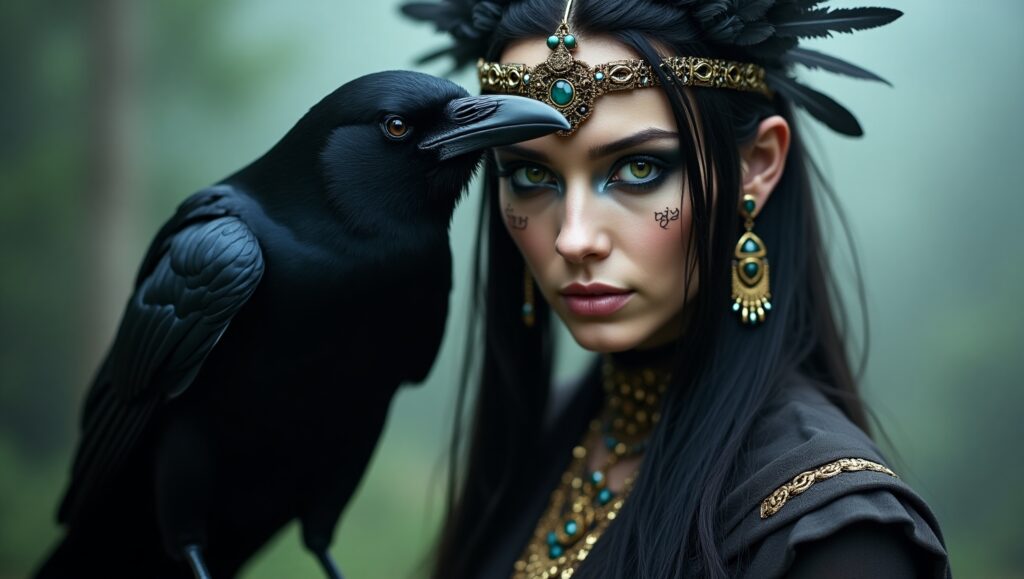
| Culture | Raven Menaing | Key Themes |
| Native American | Creator, trickster, transformer | Creation, balance, wisdom |
| Norse | Messenger, wisdom, prophecy | Insight, war, divine knowledge |
| Celtic | War, prophecy, protection | Fate, transformation, omens |
| Japanese | Divine messenger, guidance | Loyalty, vitality, enlightenment |
| Christian | Divine care, mystery | Faith, provision, trust |
Psychological Interpretations – Ravens Through a Psychological Lens:
Ravens offer rich insights into the human psyche, embodying archetypes that resonate deeply. Their dual nature invites exploration of the conscious and unconscious mind, making them powerful symbols in psychological frameworks.
Carl Jung’s psychology offers a rich lens for the raven’s spirituality. Jung saw animals as archetypes reflecting the psyche. Ravens, with their dual nature, embody the trickster and shadow. The trickster challenges norms, sparking creativity, while the shadow represents hidden traits. Ravens thus symbolize the tension between conscious and unconscious minds.
For example, a raven in a dream might signal repressed desires surfacing. Jung believed such symbols guide individuals toward wholeness, integrating light and dark aspects. This aligns with raven’s mythological roles as messengers, making them powerful tools for psychological exploration. Their presence encourages confronting the unknown within.
In therapeutic settings, ravens inspire introspection. Therapists might use raven imagery to explore clients’ fears or aspirations. Visualizing a raven can help process grief, drawing on its association with loss. This practice taps into ravens’ transformative energy, fostering emotional resilience.
You Must Know: What Does Sparrow Symbolism Teach Us About Life?
Ravens in Nature and Their Symbolic Traits:
Ravens’ natural behaviors and physical features enhance their symbolic meaning. From their unmatched intellect to their dramatic appearance, these birds possess characteristics that command respect and contemplation. This section discusses how ravens’ biology and behavior influence their symbolic functions.
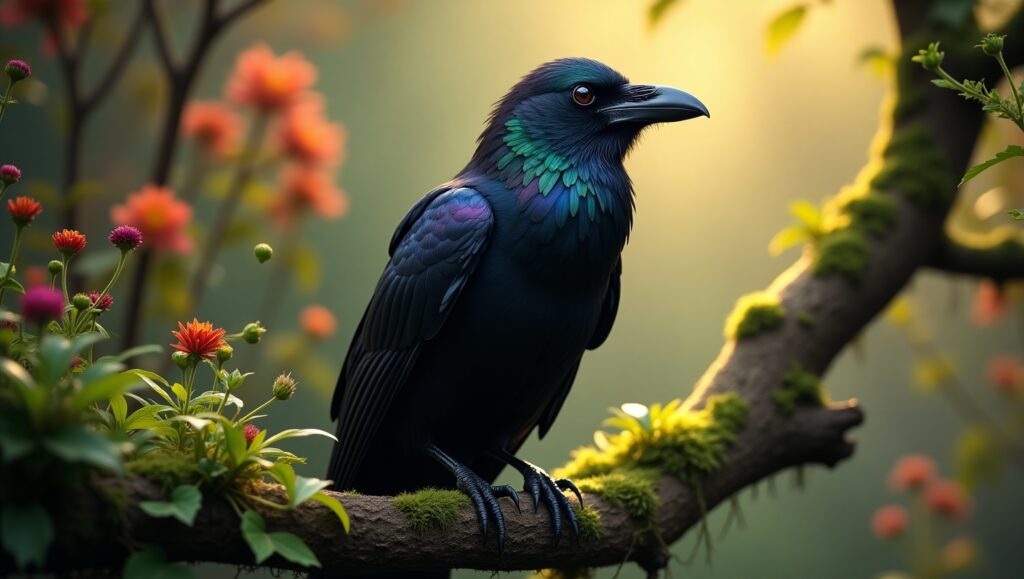
Intelligence and Adaptability:
Ravens are among the smartest animals. They figure out problems, employ tools, and anticipate future. Ravens in tests dropped rocks into pipes to reach food, demonstrating primate-like problem-solving. Their intelligence forms their symbolism as crafty navigators of life’s problems.
Social Behavior and Communication:
Ravens have complex social structures. They use diverse calls, from low croaks to mimicking human language. This diversity is reflective of their symbolic status as messengers. In mythology, ravens bear godly or ancestral messages, bridging far-off worlds. Their vocal proficiency attests to their roles as knowledge-holders.
Physical Characteristics and Symbolism:
Ravens’ physical features enhance their mystique. Their shiny black coat strikes fear into the heart, symbolizing mystery and the unknown. Their sharp beaks and nimble flight imply precision and a sense of freedom. Their longevity—up to 20 years in the wild—links to endurance and wisdom.
Seeing a Raven in Daily Life – Incorporating Raven Spirituality:
It feels deep to see a raven. Spiritually, it could be a call to introspect or adjust. Ravens make their appearances at times of transition, such as moving to a new town or breaking up with someone, promoting faith in intuition. For instance, having a raven appear nearby could mean reassessing priorities or adopting change.
In practice, note the behavior of the raven. Is it cawing repeatedly or gazing serenely? These might be signs of urgency or reassurance. Although not all encounters are mystical, remaining receptive to symbolism makes us more mindful. Ravens challenge us to stop and search for meaning in daily experiences.
Contemplating raven imagery enhances intuition and bravery. Writing in a journal about encounters can uncover information, like patterns related to life transitions. Some people make artwork inspired by ravens, stimulating creativity and tuning into their power.
Or, writing to a raven totem can define goals. This symbolic writing taps into their energy as messengers, clarifying. These rituals, based on symbolism, provide room for reflection and rebirth, aligning with their religious significance.
Common Misconceptions – Clearing Up Raven Myths:
Ravens are often misunderstood, with their dark appearance sparking myths and misconceptions. By addressing these inaccuracies, we can appreciate their true symbolic depth. This section dispels common myths and reframes ravens as multifaceted symbols.
Misconceptions About the Raven as a Symbol of Death:
The raven is frequently misunderstood as merely a symbol of death, a perception fueled by its jet-black feathers, ominous calls, and iconic presence in dark literature and myth. However, this interpretation oversimplifies the bird’s symbolic richness.
While it does appear in tales involving death and the afterlife, especially in Western cultures, the raven also embodies themes of intelligence, mystery, and spiritual transformation. In Norse mythology, Odin’s ravens—Huginn (thought) and Muninn (memory)—highlight its deeper connection to wisdom and foresight.
Ravens vs. Crows:
Many confuse ravens with crows, but key differences exist. Ravens are larger, with wedge-shaped tails and shaggy throat feathers. Their calls are deeper, often a guttural croak compared to crows’ sharper caws. For example, ravens star in epic myths as divine figures, while crows appear in folktales as clever survivors.
Negative Stereotypes:
Some label ravens as bad omens due to their dark color and scavenging habits. This view, rooted in medieval Europe, tied ravens on battlefields to death. However, most cultures see them as positive forces, symbolizing wisdom and transformation. For instance, their link to death often represents rebirth, not doom.
Ravens and Superstition:
Superstitions sometimes cast ravens as harbingers of misfortune. In some European traditions, a raven circling a house signaled illness. Yet, these beliefs oversimplify their symbolism. Across cultures, ravens more often represent insight and protection, guiding rather than cursing.
For example, in Japanese mythology, the Yatagarasu raven brings divine favor. Understanding these positive associations dispels fear, revealing ravens as multifaceted symbols of wisdom and change. This shift encourages a more balanced view of their cultural significance.
Frequently Asked Questions (FAQs):
What is the spiritual meaning of a raven?:
The spiritual meaning of a raven centers on transformation and intuition. Ravens often appear as guides during life changes, urging you to trust your inner voice and embrace the unknown. In many traditions, the raven connects to divine messages, encouraging self-discovery and spiritual growth.
What is the raven supposed to represent?
Ravens are a mix of mystery, intelligence, and duality worldwide. They are transformation, acting as messengers or tricksters in legends, and symbolize creation and shadow. They are often found signaling understanding, transformation, or an understanding connection to the cosmos.
What do Native Americans believe about ravens?
Native Americans, especially Pacific Northwest tribes, consider ravens to be sacred creators and tricksters. Raven introduces light into the world in Haida mythology. They represent balance, wisdom, and spiritual guidance, which are respected in rituals and stories.
What do raven tattoos represent?
Raven tattoos represent wisdom, change, and enigma. They also tend to symbolize personal development, intuition, or defense, mirroring old traditions such as Odin’s ravens or the Native American tricksters. Some people get them to signify resilience or spiritual quests.
Conclusion:
Ravens fascinate us with their intelligence and mystique. Their symbolism cuts across cultures, representing transformation, wisdom, and connection to the divine. From Native American tricksters to Odin’s messengers, ravens lead humanity through stories and spirituality. In literature and dreams, they remind us of introspection and transformation. Through raven symbolism, we discover insights into the world and ourselves.
Whether you meet a raven in the wild, adorn yourself with its image as a talisman, or see it in your dreams, allow its symbolism to spur you on. Take its call to confront the unknown, rely on your instincts, and change. Ravens teach us that even in shadow, there is wisdom that guides us toward growth and knowledge.



